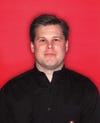For first time, digital coupons overtake print circulars in redemptionFor first time, digital coupons overtake print circulars in redemption
Digital load-to-card accounted for nearly 30% of coupons used in 2020, Inmar reports
April 23, 2021

An inflection point may have been reached in the battle of digital coupons versus print circulars, according to new research from Inmar Intelligence.
In 2020, digital load-to-card (L2C) coupon redemption exceeded that of paper free-standing inserts (FSIs) and was the most redeemed coupon method for the first time ever, according to Inmar’s Promotion Industry Analysis. Digital L2C accounted for 29.3% of all redemption volume, compared with 28% for FSIs.
By share of volume, digital L2C tallied a 27% increase in redemption last year, reported Inmar, a Winston-Salem, N.C.-based provider of data-driven technology services for retailers and manufacturers, among others.
The shift to digital stems mainly from lower paper redemption volumes due to decreased FSI volume, pandemic conditions and growth in online grocery use, not lower shopper interest in promotions, Inmar explained. Overall redemption volume fell 21% to 1.05 billion coupons in 2020, slightly smaller than 24% decline to 1.32 billion coupons in 2019. In addition, as more consumers engaged in hybrid shopping behavior — buying groceries both in-store and online — their opportunities to use paper coupons dissipated while engagement with digital coupons accelerated, noted Inmar.
Total coupon distribution in 2020 sank 15% to 200.13 billion, larger than the 12% decrease to 235.46 billion coupons distributed in 2019. Inmar said the drop-off mostly reflects the impact on FSIs from falling newspaper circulation. FSIs have represented about 90% of coupon distribution for each of the past three years and dictate the overall direction of distribution trends, noted Inmar.

Overall coupon distribution fell 15% in 2020, with paper free-standing inserts (FSIs) representing about 90% of coupons distributed.
Digital L2C was the second most-distributed coupon method in 2020 and accounted for 3.6% of coupon distribution volume, lifted by a 6% year-over-year gain. Load-to-card, or electronic discount (EDO), has seen steady growth in coupon distribution share over the past four years, Inmar said.
“Growth in digital coupon redemption has been upward trending now for the past couple of years, which has no doubt been exacerbated by the COVID-19 pandemic,” explained Spencer Baird, executive vice president at Inmar and president of its MarTech division. “Digital is now a channel preferred across generations and, with many of today’s consumers doing their shopping online, digital coupons provide the most convenience and personalization.”
Indeed, Inmar’s 2021 Shopper Behavior Study revealed that digital coupon use by Generation X shoppers climbed 6% to 69% in 2021 from 65% in 2020. The gain was even bigger among Baby Boomers, whose use of digital coupons jumped 18% YOY increase from 49 percent in 2020 to 58 percent in 2021, indicating continued demand for digital.
The generations with the highest percentage of shoppers seeking digital coupons before going grocery shopping at the store were Boomers at 59% and Gen Xers at 54%, the study found. Similarly, 94% of Gen X and 86% of Boomer shoppers polled said personalized coupons and promotions were key factors when joining a loyalty program. In turn, 50% of Boomers and 63% of Gen Xers agreed or strongly agreed that they use digital coupons through their loyalty account or card because it’s easier than using paper coupons.
Consumers of all ages are becoming more digitally savvy, driven in part by the pandemic, which steered many people to online channels as a safer, more convenient way to shop, according to Inmar. At the same time, shopper demand for cost savings and value is rising, prompting consumers to visit retailers that help them stretch their budgets. Sixty-nine percent of shoppers reported that using a coupon changed their purchase decision in some way in the fourth quarter of 2020.
“As consumers still face economic uncertainty during this time, it’s especially important for brands and retailers to provide more value and savings at the register,” Baird added. “It is up to retailers to provide a wide range of digitally available value, and those that do will come out on top.”
About the Author
You May Also Like


.webp?width=300&auto=webp&quality=80&disable=upscale)



